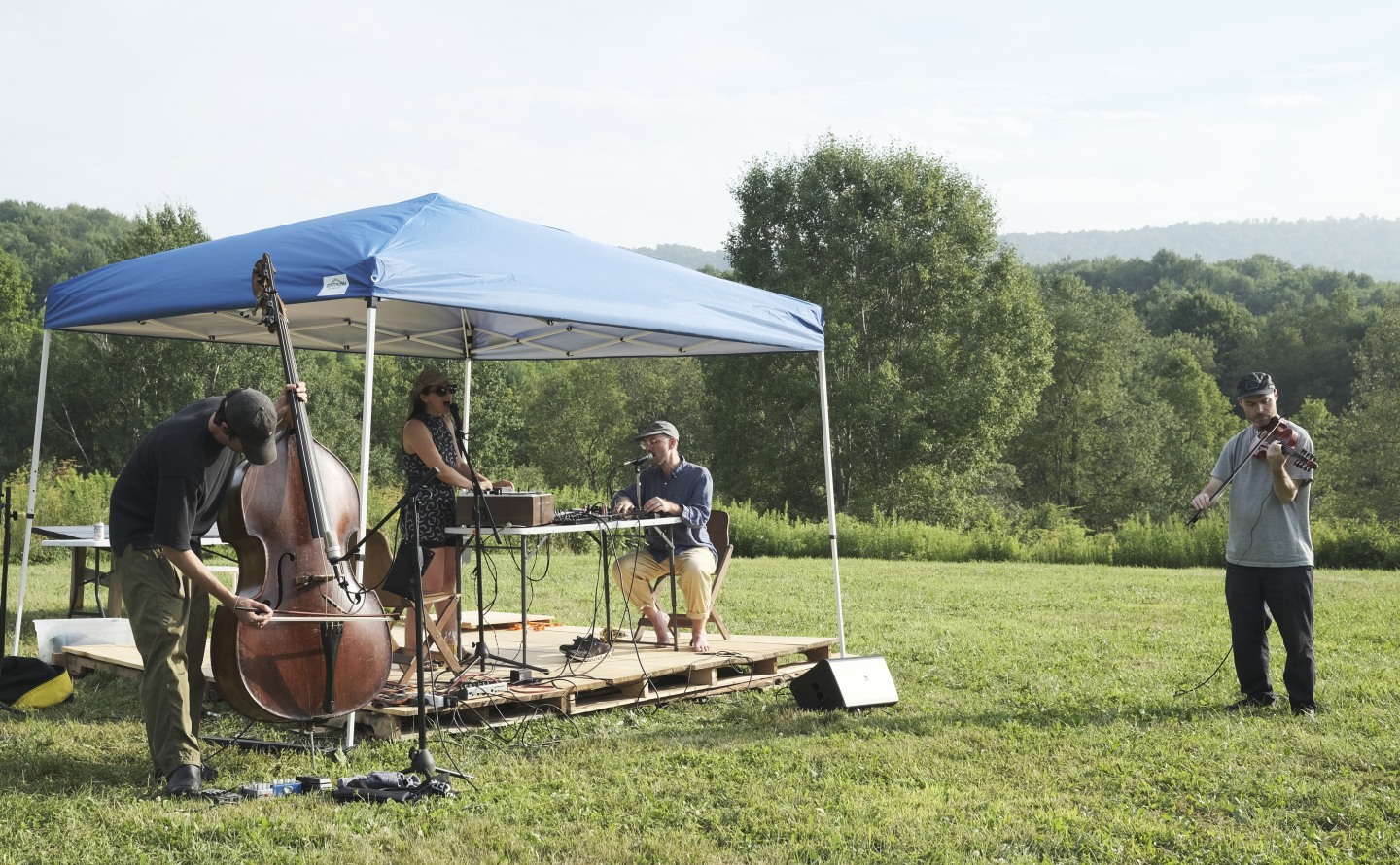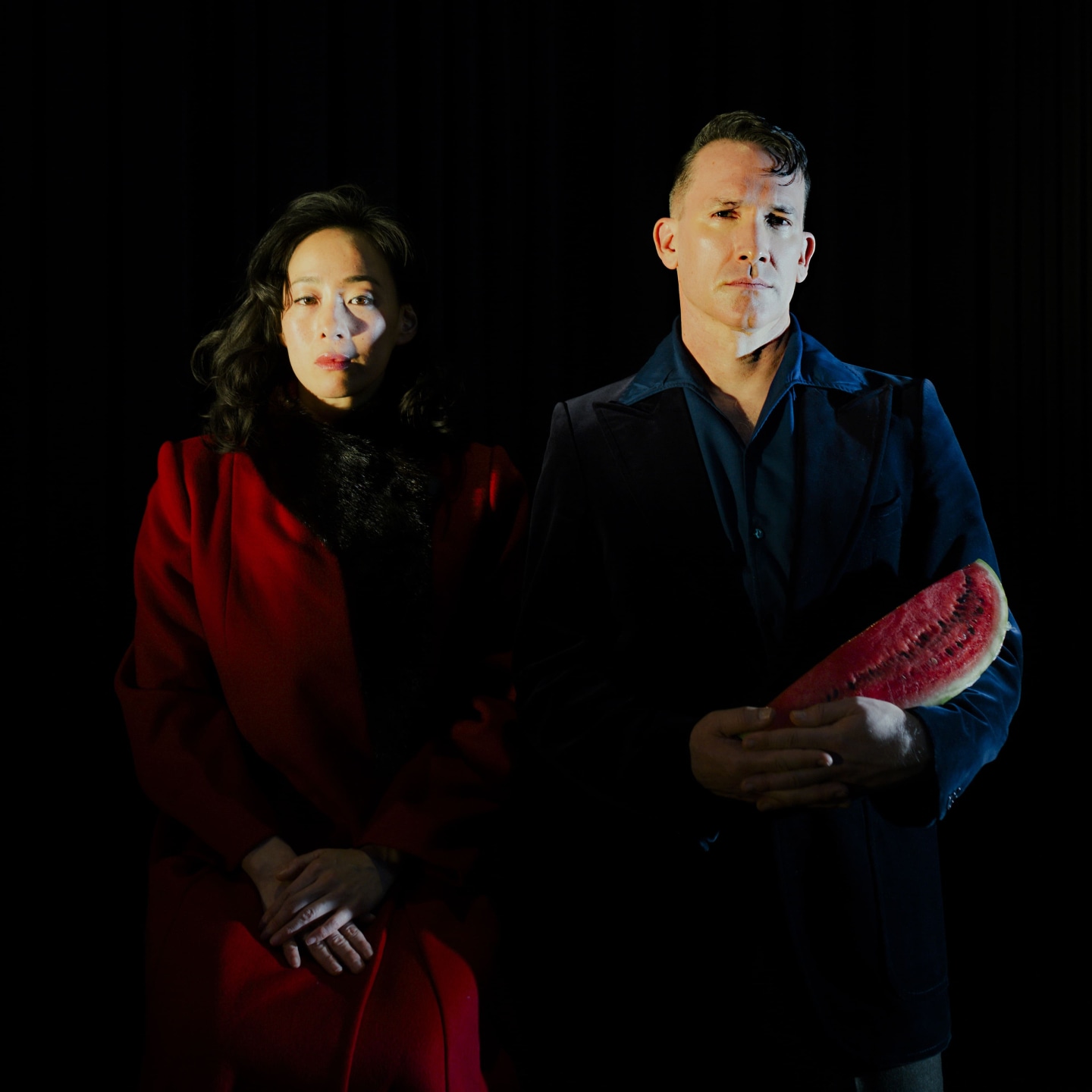From left: Henry Fraser, Lea Bertucci, Ben Vida, and Cleek Schrey. Photo by Chris Chin.
Apollo Frequencies is a series exploring sounds that seem to come from another world. In this week’s edition, a dispatch from a three-day experimental music festival in rural New York.
If you lie down in the middle of the field, the sound zips around you like a phantom boomerang. It’s Saturday afternoon in Bloomville, New York, a hamlet tucked away in a valley just north of the Catskills. On a low wood palette under a tailgate tent, Paul Geluso is opening the second day of Woodstockhausen 2025 with a whirring, slippery noise set. A pioneer of ambisonic (3D) audio, Geluso has opted for the less-involved quadrophonic (2D) setup of four speakers, arranged in a square that could comfortably fit around 100 supine bodies like mine lying evenly around the “stage.” Some stand, some sit on the grass or on yoga mats; others walk the square’s periphery, comparing the ever-shifting acoustic pockets of the open space.
$65 and an open mind are all one needs to secure full access to Woodstockhausen, a celebration of DIY electronic music held for the past three years on the land of artist and jack of all trades Michael Milton. His property, dubbed the Turquoise Barn, begins at the bottom of a hill at the foot of a mountain. To the right is the eponymous barn, a one-room structure where several pieces play on loop through an eight-speaker ambisonic setup for the duration of the festival. Further up the hill is another, much larger barn, which hosts the festival’s nighttime performers. At the top is the field, where the daytime acts play.
Woodstockhausen began in 1998, in the Boulder Creek, California backyard of audio engineer Wayne Jackson. It started as a low-key hang for DIY synthesists and gear lovers but quickly outgrew its setting, moving to the UC Santa Cruz’s Quarry Amphitheater in 2003. Feeling it had reached its peak, Jackson killed the festival after that year, reviving it in its original form as µHausen (Microhausen) in 2010. Jackson is here at Woodstockhausen East, founded in 2023 by Geluso, his colleague Agnieszka Roginska, his wife Rhiannon Catalyst — who co-runs the show and curates its Sunday programming — and audio engineer Jean-Marc Jot, who’s also here, DJing between most of the festival’s sets.
Woodstockhausen East has grown substantially since its inaugural year. Still, most of its attendees are featured artists, several of whom are also staff. Acts like Ben “leshy” Krasner, who converts the pitch of his homemade ceramic percussion to MIDI signals which broadcast through the speakers and ripple the air; Dean Fraser, who synthesizes monstrous sounds on opening night while ghastly mirror images dance behind him in black and white on a projector screen pulled taut between the wooden beams of the barn; and Ximena Bedoya, who does an ultraminimalist, hyperfocused pedal steel set, at one point playing the instrument with a back massager, are all parts of the team that make the festival smoothly.
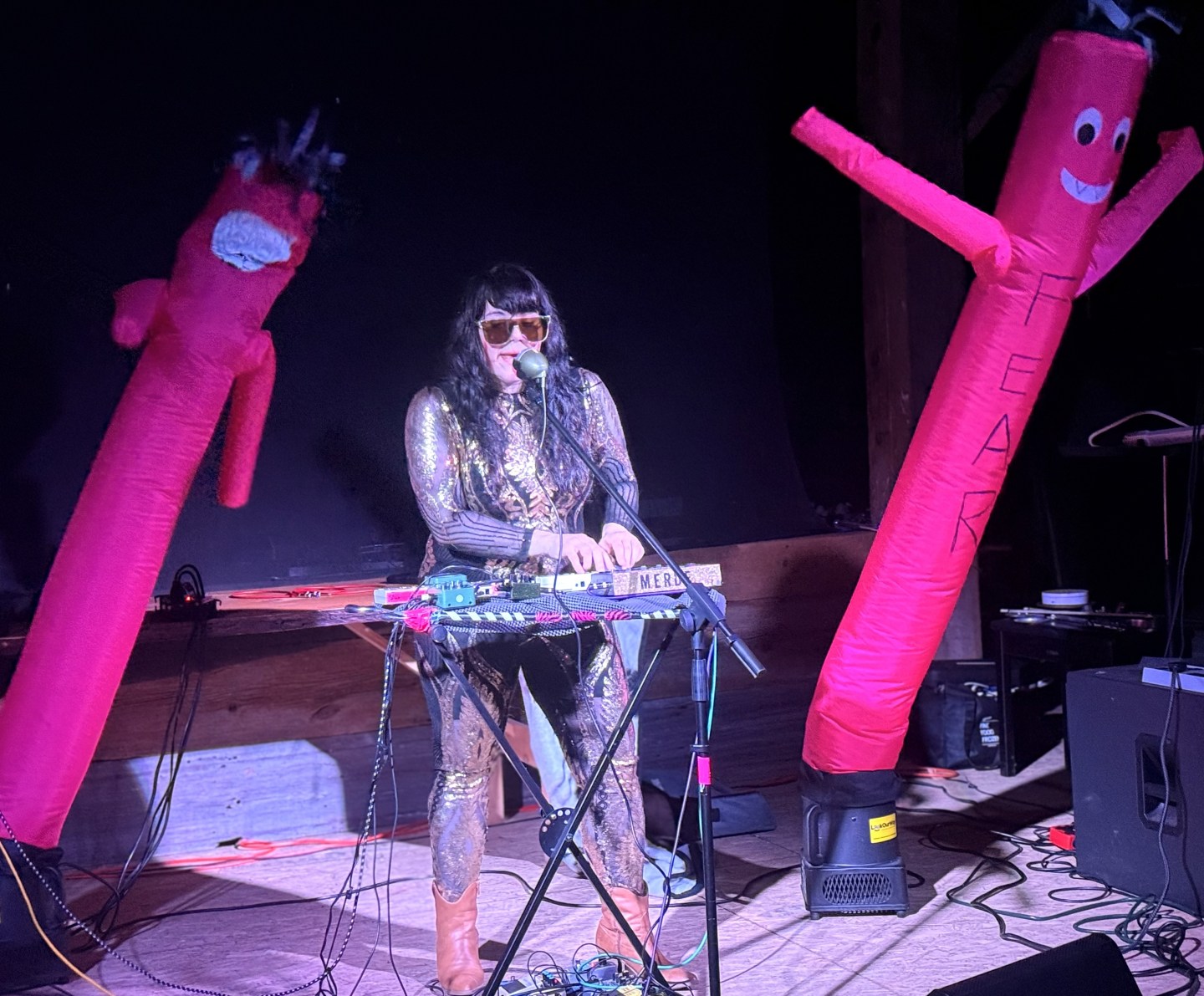
Glockabelle. Photo by Rhiannon Catalyst.
One of the festival’s unwritten rules is that no traditional songs are allowed. This rule is broken only twice. The first time, Glockabelle brute-forces her way through a set that includes tube men and an open call for audience members to crouch by her side and act like cats. She operates on a keyboard and several less traditional synthesizers with obvious skill, but she’s playing her swamp-tech-adjacent tracks so fast they’re flying off the rails. When she does finally reveal the glockenspiel lying in wait below her synth rack, she employs it to play Satie’s “Gnossiene no. 1” at 2X speed with slip-on metal fingernails. It’s a lot of fun to watch.
Breakage number two is less so. The artist in question plays flaccid R&B featuring barely competent bass and mumbled vocals. At one point, he beatboxes. I’d lay off him, but later that night he traps me in what feels like an hour-long conversation about how he reset his ego with the Amazonian toad venom kambo and tells my friend who’s moving to the Bronx that they’re racist to white people there.
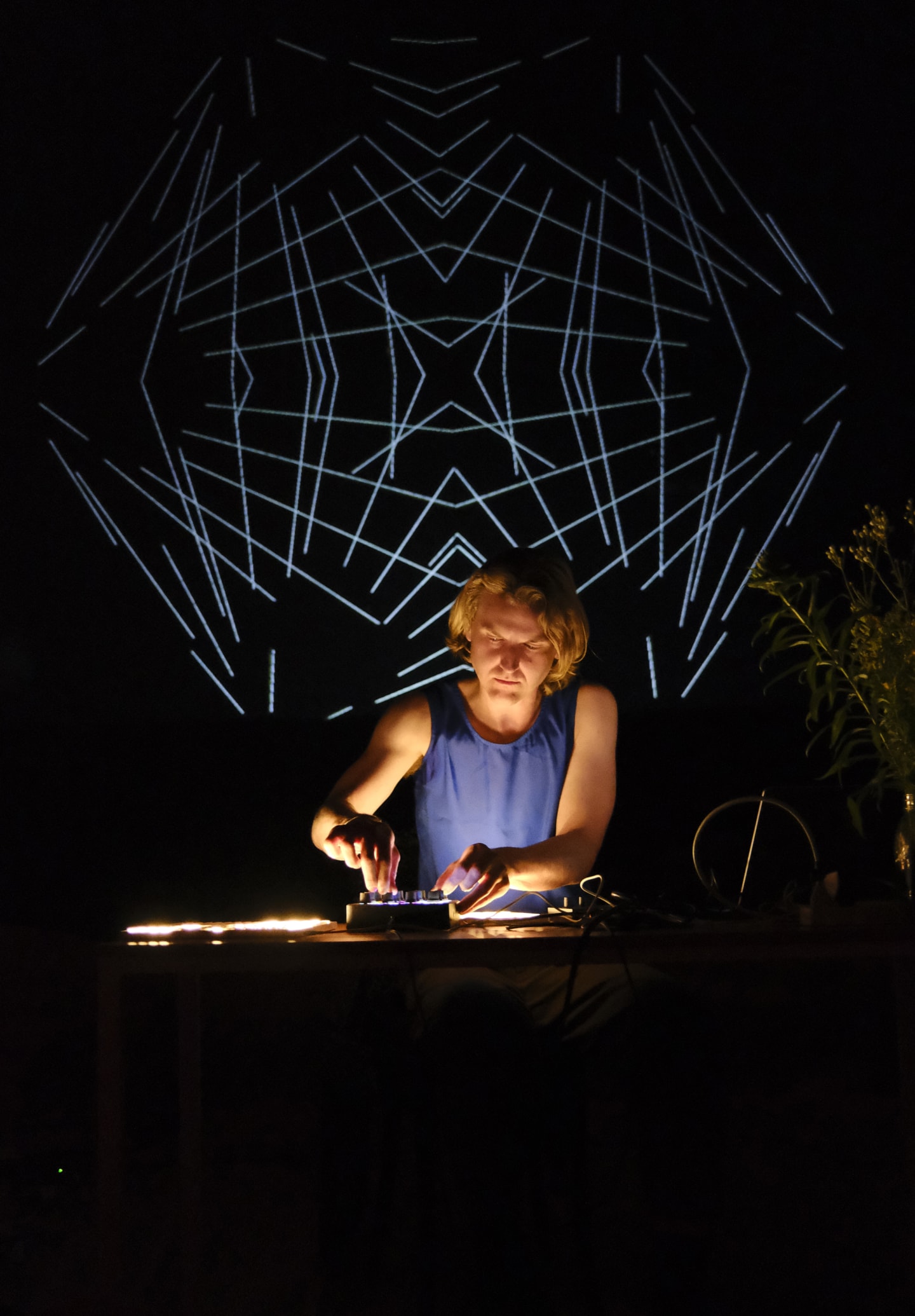
Dani Derks. Photo by Craig Chin.
A few other acts tend toward new-age nonsense or teeter on the brink of stuffy academia, but the vast majority of the artists at Woodstockhausen East are excellent. @61 is the husband-wife duo of keyboardist Mihoko Suzuki and synthesist Timothy Cramer, who manipulates Suzuki’s sounds on a massive modular board, adding chirps and yelps through a headset mic. On the screen above them play stills taken by a security camera atop their home, setting up a spontaneous yet cinematic narrative that’s at turns funny, scary, and sad. And there’s Matthew D. Gantt, who takes us on an audiovisual adventure about which I gather the following: Gantt inputs MIDI gestures into a game engine that cause aspects of the visual world projected above him to change. These changes then convert back to MIDI, thereby affecting the sounds we hear. The result is as mystifying as it sounds, but it’s also a textural joy ride, enthralling from start to finish.
Woodstockhausen’s most fascinating performers, though, are those who take the tacit “no songs” rule most literally, opting to focus purely on the synthesis of sound. On Friday night, Barry Weisblat takes us back to a time when we hadn’t yet tamed electricity, employing photovoltaic sensors and other dangerous-looking machines to craft some of the most interesting sounds I’ll hear all weekend — sharp and staticky without wreaking havoc on the eardrums. The next day, Warren Realrider and Robbie Wing present an onslaught of freshly crafted horrors, some of which Realrider seems to be creating with a contact mic inside a bell that he blows into and wraps in a snarl of cables as the set goes on. Despite taking place on a wide-open field, they create an utterly claustrophobic noise tunnel.
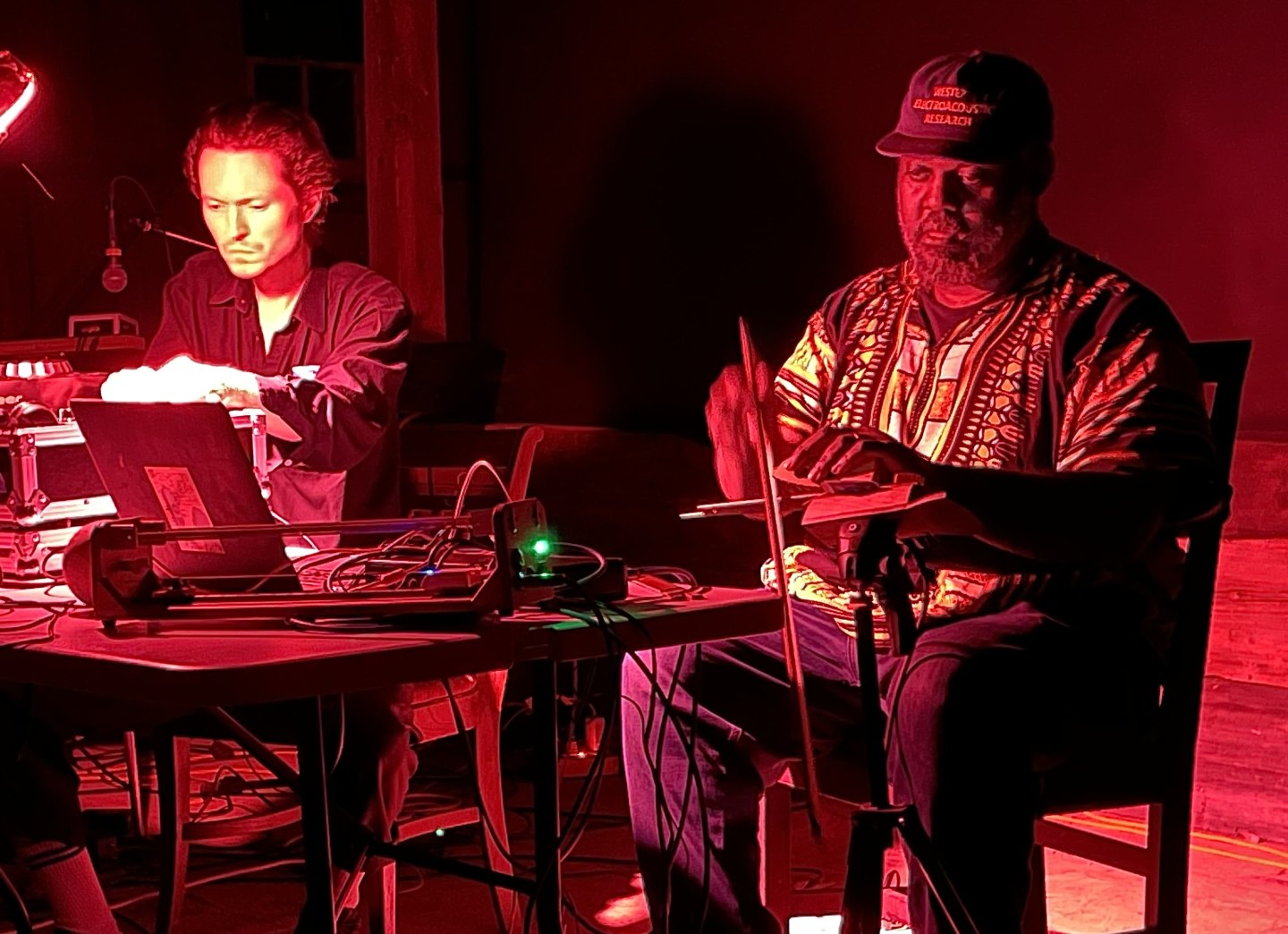
Bryce Hackford (left) and Kevin Ramsey. Photo by Rhiannon Catalyst
I’m treated to a preview of Ben Bennett’s deranged set on Saturday evening when, while charging my phone in the house where the artists are staying, I hear some absolutely nightmarish squeaking from the dining room. It’s Bennett, rubbing pieces of steel, styrofoam, and plywood up and down a bass bow he holds vertically between his knees. I go in and watch for a moment. He looks up at me silently. Unsure what to say, I give him the sign of the horns and walk away, thinking, “This guy’s gonna bring the barn down.”
And he does. Even with 30 hours of righteous ear torture under my belt, I’m still unprepared for Bennett’s set. He’s the only act in the entire three-day festival to play alone and unaided by any electrical devices (save for two microphones). The sheer terror he’s able to conjure with just a few analog components is a reality check after the weekend’s many complexities; sometimes, the simplest methods yield the most powerful results.
On Sunday, as I watch River Luna perform a confrontational butoh dance soundtracked by a pencilina/accordion duo called Grains of Euphora, I’m aware that most of the sets I’ve seen this weekend would probably look ridiculous to an overwhelming majority of the world’s population. But maybe that’s their power. Megacorporations will continue to consume the live music experience for the foreseeable future, but no matter how fat their portfolios are, they’ll always be a step behind the feeling of lying on the grass, watching a guy loop his clarinet in front of a pond and cast a mic into the water with a fishing rod.
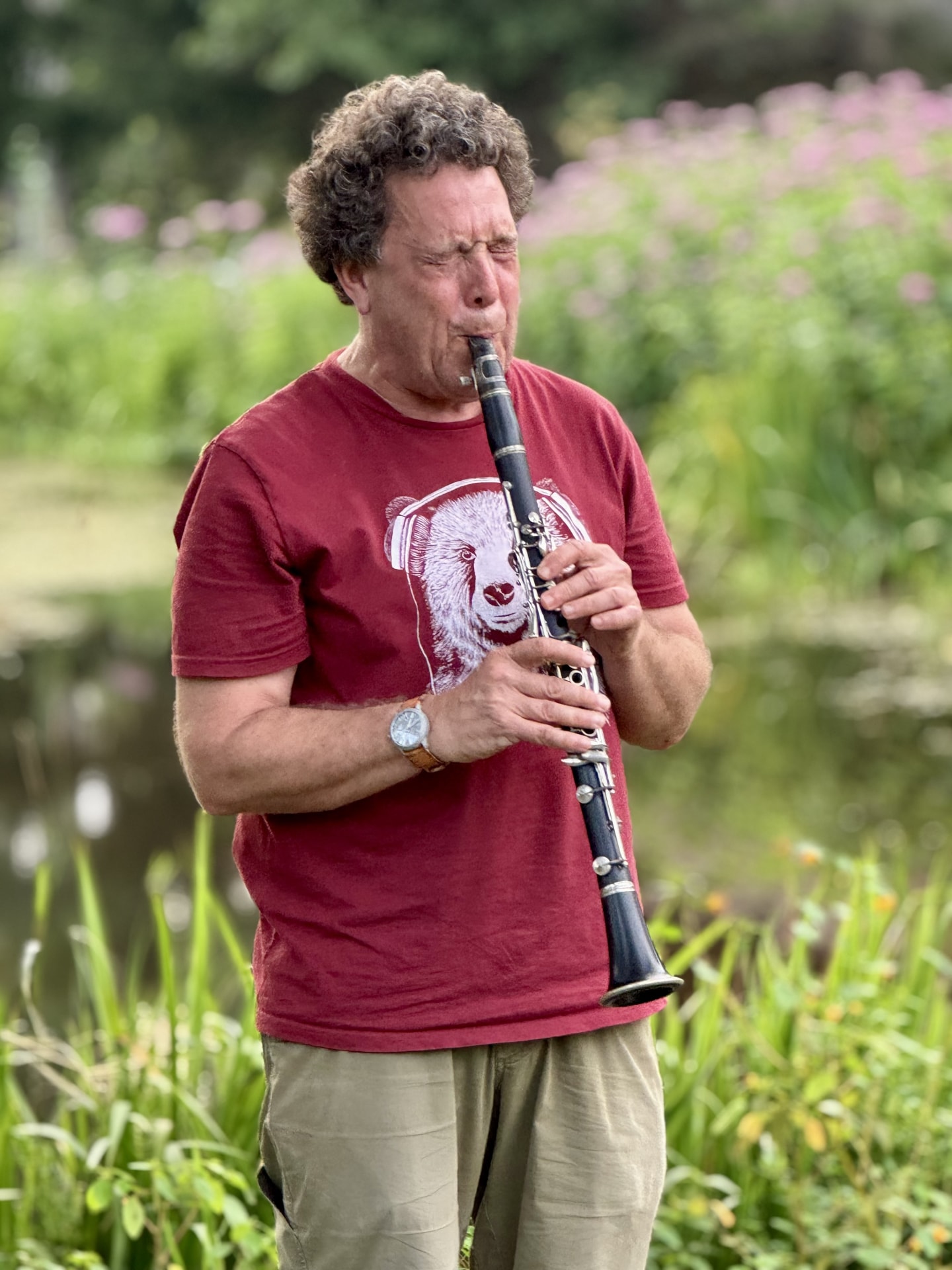
David Rothernberg. Photo by Rhiannon Catalyst.

